Latest Chatbot Development Pricing Trends for 2025
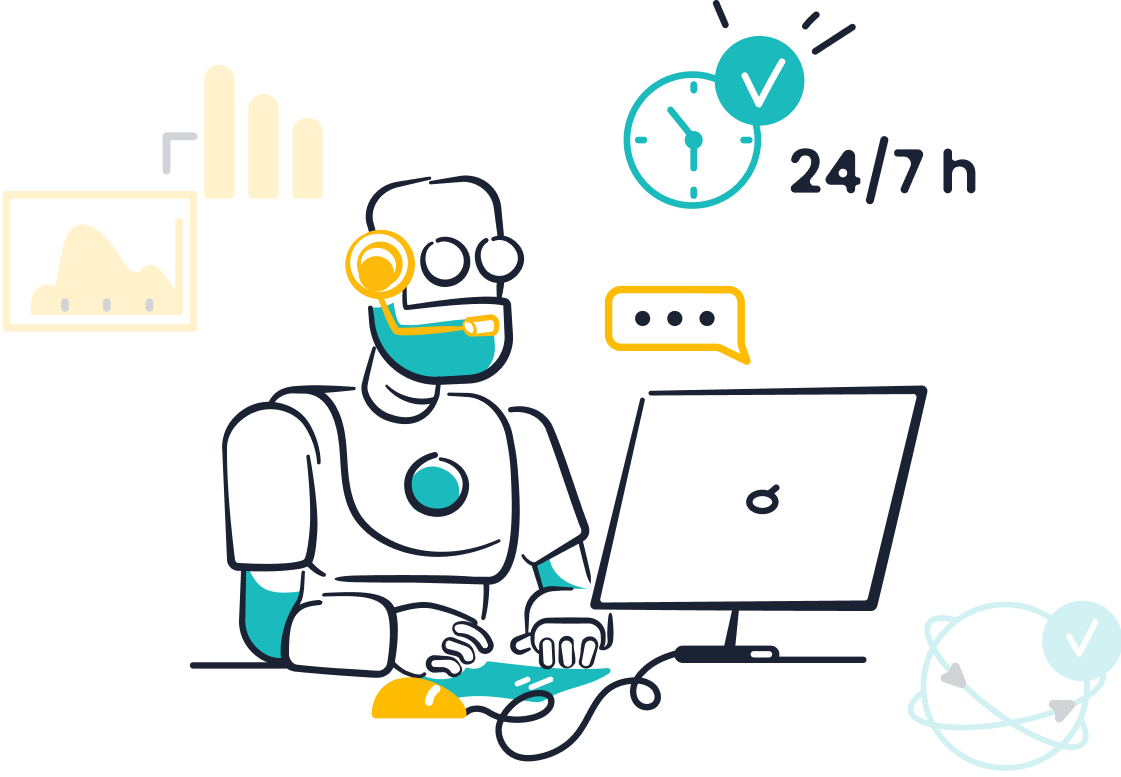
How much does it cost to build a chatbot in 2025? The answer depends on the solution’s complexity and business needs. Simple FAQ bots start at $3,000, while AI-powered or voice-enabled chatbots can exceed $100,000. For ongoing use, chatbot pricing ranges from $30 per month for small businesses to $10,000 or more monthly for enterprise-grade solutions.
| Chatbot Type | Typical Cost Range (2025) |
|---|---|
| Simple FAQ Bot | $3,000 – $5,000 |
| Transactional Bot | $7,000 – $20,000 |
| AI-Powered Bot | $25,000 – $100,000+ |
| Voice-Enabled Bot | $15,000 – $50,000 |
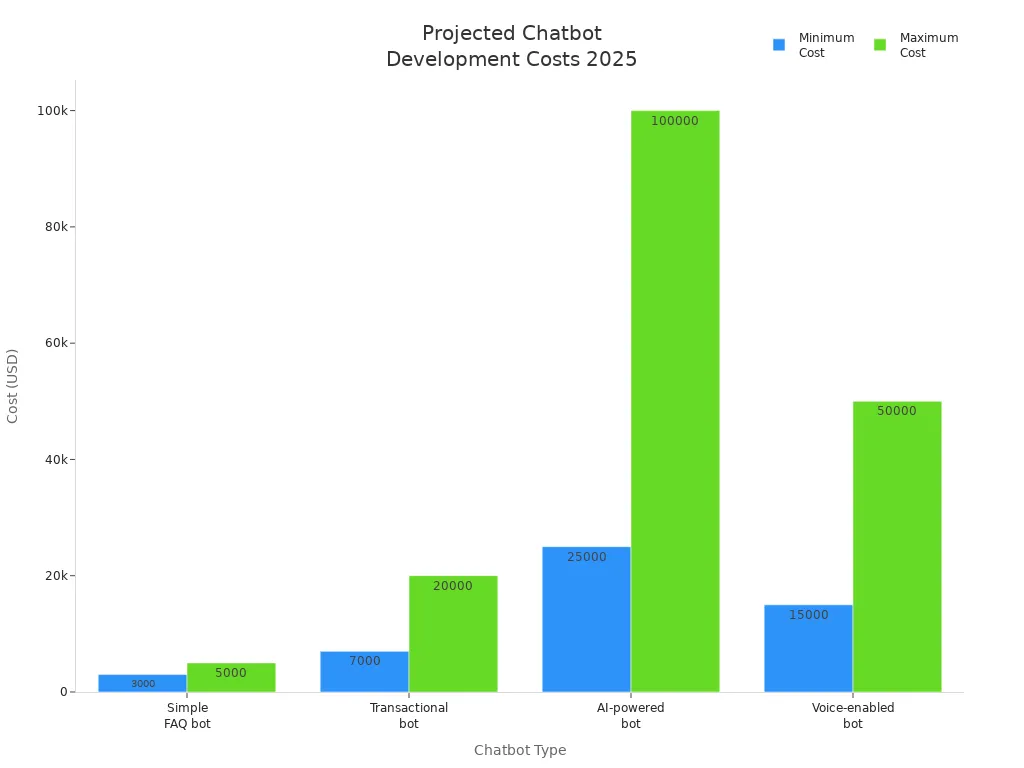
Understanding chatbot pricing helps customer service and ecommerce leaders make smart investments that can automate up to 70% of support inquiries and drive significant cost savings. Sobot stands out by offering innovative, multilingual AI solutions trusted by global brands, making Sobot AI a reliable choice for businesses seeking optimal chatbot ROI.
How Much Does It Cost to Build a Chatbot?
Chatbot Pricing Ranges
Chatbot pricing in 2025 covers a wide spectrum. The answer to "how much does it cost to build a chatbot" depends on the type of solution and the features required. Businesses can choose from rule-based chatbots, AI-powered chatbots, generative AI chatbots, and custom solutions. Each option comes with its own pricing structure and capabilities.
| Chatbot Solution Type | Typical Pricing Range (2025) |
|---|---|
| Rule-based Chatbots | $10,000 – $30,000 |
| AI-powered Chatbots | $75,000 – $150,000+ |
| Generative AI Chatbots | $150,000+ |
| Custom Development (AI) | $75,000 – $150,000+ |
| Chatbot-as-a-Service (CaaS) | Lower starting points, more affordable but with limitations |
| Facebook Chatbots (Rule-based) | $2,000 – $10,000 |
| Facebook Chatbots (AI-powered) | $10,000 – $50,000 |
| WhatsApp Chatbots (Custom Development) | $5,000 – $30,000+ |
| WhatsApp Chatbots (Third-party platform subscription) | $50 – $500 per month |
These pricing ranges reflect the growing demand for advanced automation and AI in customer service. Businesses often ask, "how much does it cost to build a chatbot" when planning digital transformation. The answer varies based on the complexity, integrations, and channels supported. For example, a simple Facebook chatbot may cost less than a custom AI-powered solution with omnichannel support.
Note: Chatbot pricing continues to evolve as technology advances and more businesses seek scalable solutions.
Average Chatbot Pricing by Business Size
Average chatbot pricing changes based on the size and needs of the business. Small and medium-sized businesses (SMBs) usually start with basic chatbots that offer essential automation and quick setup. Enterprises often require more advanced features, such as deep AI capabilities, omnichannel support, and high scalability.
| Chatbot Type | Monthly Pricing Range | Key Features and Capabilities |
|---|---|---|
| Basic (SMB) | $30 - $150 | Essential automation, no-code builders, lead generation, customer support, simple automation |
| AI-powered (Mid-market) | $800 - $1,500 | Advanced AI, natural language processing (NLP), customization, integrations |
| Enterprise-level | $3,000 - $10,000+ | Deep AI capabilities, high scalability, omnichannel support, advanced security |
- Large enterprises face higher chatbot cost due to complex requirements, integrations, and larger datasets.
- Enterprises invest more in developer expertise and support, but they gain broader benefits like improved automation and higher auto-resolution rates.
- SMBs benefit from lower initial costs and faster ROI, as their chatbot pricing for smbs reflects streamlined deployment and immediate impact.
- Both SMBs and enterprises see positive outcomes, but the scale and complexity of the chatbot directly impact the total cost.
Tip: Businesses should match their chatbot pricing model to their current needs and future growth plans.
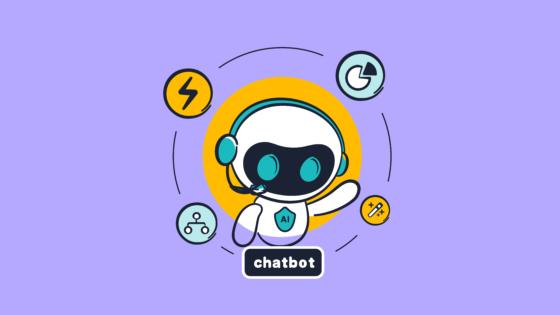
Sobot Chatbot Cost Overview
Sobot delivers flexible chatbot pricing for businesses of all sizes. The company offers solutions that fit SMBs, mid-market, and enterprise needs. Sobot's chatbot pricing for mid-market businesses starts with affordable monthly plans, making advanced AI-powered chatbots accessible without large upfront investments. For enterprises, Sobot provides custom solutions with deep AI capabilities, omnichannel support, and advanced security.
Sobot's chatbot cost structure includes:
- Subscription-based plans for SMBs, starting as low as $30 per month.
- Scalable options for mid-market companies, with pricing tailored to usage and feature requirements.
- Custom enterprise solutions, where chatbot pricing for enterprises reflects the need for integrations, multilingual support, and 24/7 operation.
Sobot's value proposition centers on efficiency, cost savings, and improved customer experience. The Sobot AI Chatbot automates up to 70% of regular queries, operates 24/7, and supports multiple languages. This approach helps businesses reduce service costs by up to 50% and boost conversions by 20%. Sobot's transparent pricing and flexible plans make it easy for companies to understand how much does a chatbot cost and select the right solution for their needs.
For more details on Sobot's chatbot pricing and features, visit the official Sobot Chatbot page.
Chatbot Pricing Factors

Complexity and Features
Chatbot pricing in 2025 depends heavily on the complexity and features of the solution. Businesses can choose from simple rule-based bots or advanced ai-powered chatbots. The more advanced the chatbot, the higher the development and maintenance costs.
- Simple rule-based chatbots cost between $2,000 and $30,000.
- Ai-powered chatbots with natural language processing and machine learning range from $75,000 to $500,000 or more.
- Generative AI chatbots start at $150,000 and can go higher with custom features.
- Maintenance costs add about 15-20% of the original development cost each year.
Advanced features like continuous learning, compliance, and custom encryption increase both initial and ongoing costs. Sobot’s AI Chatbot, for example, offers 24/7 operation, multilingual support, and real-time intent assistance, which enhance user experience but also impact pricing. Businesses should consider modular development and pre-trained models to manage chatbot cost.
Integrations and Omnichannel Support
Integrations with CRM, ERP, and other business systems play a major role in chatbot pricing. Each integration requires extra coding, testing, and maintenance. Transactional chatbots that handle bookings or order management need seamless connections to backend systems.
- More integrations mean higher project budgets and ongoing costs.
- Enterprise-level solutions with multiple integrations often have monthly costs from $500 to $1,000 or more.
- Sobot’s chatbot supports omnichannel interactions, connecting with WhatsApp, SMS, and other platforms to deliver a unified user experience.
Multilingual and 24/7 capabilities also affect pricing. These features allow businesses to scale globally, automate up to 70% of queries, and reduce manual translation costs.
| Aspect | Impact on Cost and ROI |
|---|---|
| 24/7 Availability | Cuts support costs, automates up to 70% of resolutions, improves user experience |
| Multilingual Support | Boosts satisfaction, reduces translation costs, expands market reach |
| Total Costs | Includes implementation, maintenance, training, integration, and staff time |
| Total Benefits | Labor savings, increased sales, improved efficiency, up to 200% ROI |
Support and Maintenance
Ongoing support and maintenance are critical factors in chatbot pricing. Providers offer different plans based on usage, features, and support levels. Maintenance includes updates, retraining AI models, security audits, and integration upkeep.
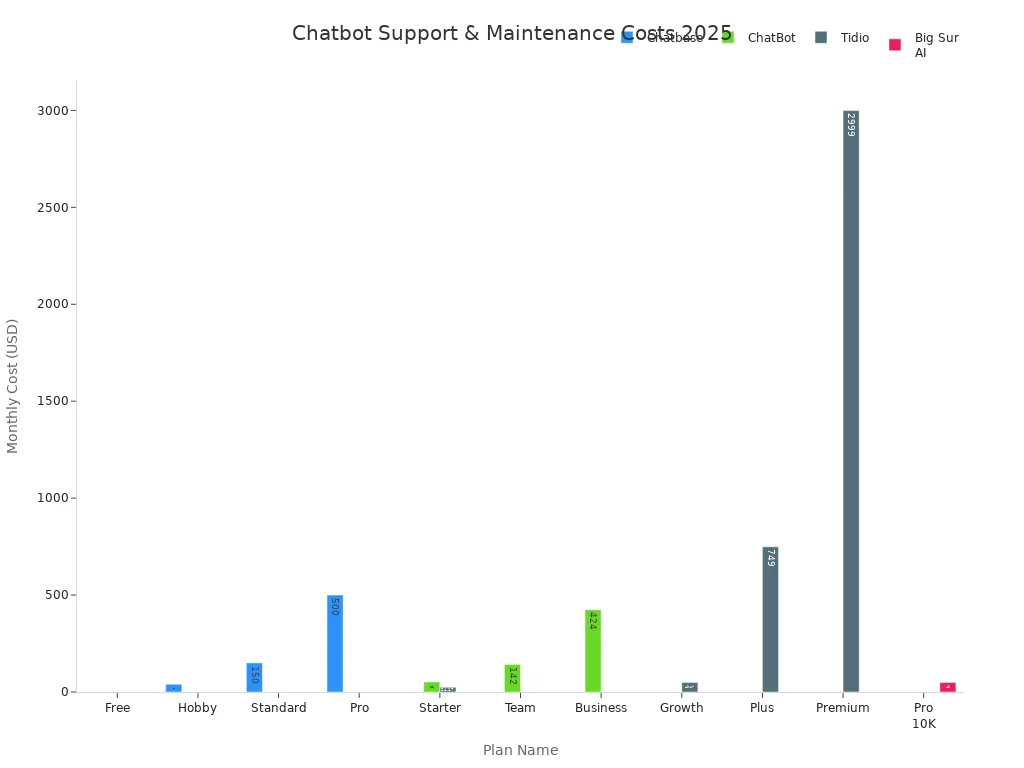
Maintenance costs can range from $24 per month for basic plans to $3,000 or more for enterprise solutions. Sobot’s chatbot includes regular updates, 24/7 technical support, and easy optimization, helping businesses maintain high performance and user experience. Regular maintenance ensures the chatbot adapts to changing business needs and keeps data secure.
Chatbot Pricing Models
Subscription Plans
Subscription plans remain one of the most popular chatbot pricing models in 2025. Businesses pay a fixed monthly fee for access to a set of features and usage limits. This model offers predictable costs, making it easier for small and medium-sized businesses to budget. Most plans include essential features like conversational AI, templates, and visitor tracking. Higher-tier plans unlock advanced options such as multi-language support, audit logs, and dedicated account managers. However, lower-cost plans may limit customization and restrict access to premium features. Sobot’s subscription plans start at accessible rates, allowing companies to scale as their needs grow.
Tip: Subscription plans work best for organizations with steady chatbot usage and a need for cost control.
Usage-Based Pricing
Usage-based pricing, also known as pay-as-you-go, charges businesses based on actual chatbot interactions or sessions. This model provides flexibility and scalability, especially for companies with seasonal or fluctuating demand. Costs typically range from $0.01 to $0.10 per interaction. While this approach avoids large upfront fees, monthly expenses can rise quickly during high-traffic periods. Usage-based pricing suits businesses that want to experiment or gradually expand their chatbot deployment. Sobot offers usage-based pricing options for clients who need flexibility and want to align costs with actual usage.
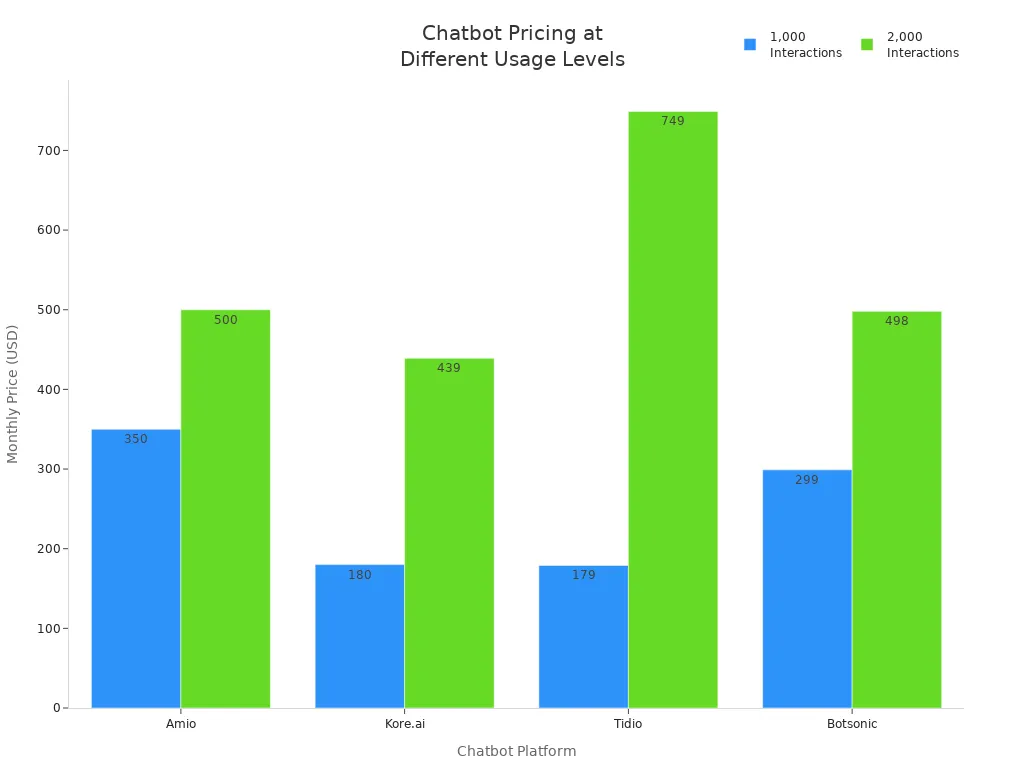
Custom Enterprise Solutions
Custom enterprise solutions provide the highest level of flexibility and integration. These chatbots are tailored to meet specific business workflows, branding, and compliance requirements. Companies benefit from deep integration with CRM, ERP, and third-party systems, as well as advanced features like emotional intelligence and multilingual support. Custom solutions require a higher initial investment and longer development time, but they deliver a unique competitive advantage. Sobot’s enterprise custom pricing includes base fees and performance-based charges, ensuring scalability and alignment with business outcomes.
| Aspect | Custom Enterprise Chatbots | Standard Chatbots |
|---|---|---|
| Flexibility | High | Limited |
| Integration | Deep (CRM, ERP, APIs) | Basic |
| Personalization | Extensive | Generic |
| Cost | Higher, but scalable | Lower, fixed |
| Setup Time | Longer | Quick |
Sobot Chatbot Model Comparison
Sobot supports a hybrid approach, combining subscription and usage-based pricing. This model gives businesses the freedom to choose a plan that matches their needs. SMBs can select tiered subscriptions for predictable costs, while enterprises can opt for custom contracts with usage-based elements and SLA guarantees. Sobot’s flexible pricing structure aligns with industry standards and supports both steady and fluctuating chatbot demand. Companies benefit from scalable solutions, transparent pricing, and dedicated support, making Sobot a strong choice for customer service and ecommerce leaders seeking optimal ROI.
Chatbot Trends 2025
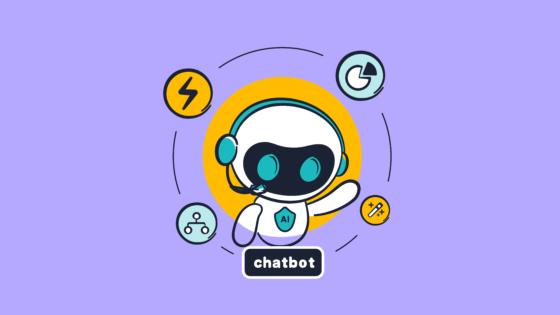
AI and Personalization
AI and personalization stand at the center of chatbot trends in 2025. Businesses now expect chatbots to deliver tailored experiences for every customer. By 2025, 70% of CRM systems will integrate AI features like predictive analytics and personalized recommendations. This shift increases the complexity and value of chatbot solutions, which directly impacts pricing. Companies invest in AI-powered chatbots to automate conversations, predict customer needs, and provide real-time support. These investments require continuous training and customization, raising the overall cost but also improving customer engagement and satisfaction. As a result, chatbot adoption continues to rise, with 70% of customers preferring chatbots for simple queries.
Voice and Omnichannel Integration
Voice technology and omnichannel integration have become essential in modern chatbot design. Customers interact with brands across e-commerce platforms, social media, apps, emails, and SMS. Businesses need chatbots that can operate seamlessly on all these channels. Voice-enabled chatbots allow users to speak naturally, making interactions faster and more intuitive. Sobot leads in this area by offering an all-in-one AI contact center solution that integrates voice, chat, and messaging across multiple platforms. As more companies adopt omnichannel strategies, pricing reflects the added value of unified customer engagement and advanced integration.
Automation in Customer Service
Automation transforms customer service by handling repetitive tasks and providing instant responses. In 2025, 60% of businesses believe chatbots improve customer satisfaction. Automated chatbots resolve up to 70% of support inquiries, freeing human agents for complex issues. This trend drives higher chatbot adoption and justifies increased pricing for advanced automation features. Companies see improved efficiency, reduced labor costs, and better customer experiences. Automation also supports chatbot for lead generation, helping businesses capture more leads while maintaining high service standards.
Sobot Innovations
Sobot stands out as a leader in AI-powered chatbots and omnichannel engagement. The platform leverages generative AI, scenario-based AI, and secure AI to deliver human-like conversations. Sobot’s official status as a WhatsApp Business Solution Provider enables enhanced customer engagement through WhatsApp Business API. The company supports intelligent routing, personalized interactions, and seamless integration across channels. Sobot’s management tools offer process monitoring, quality inspection, and over 300 statistical reports, helping brands like Samsung and Michael Kors achieve high customer satisfaction and operational efficiency. These innovations reflect the latest chatbot trends and set new standards for pricing and value in the industry.
Maximizing Chatbot ROI
Choosing the Right Model
Selecting the right chatbot model is essential for maximizing ROI in 2025. Businesses should evaluate their needs, budget, and growth plans before choosing between subscription, usage-based, or custom solutions. A well-matched pricing model helps control cost and supports long-term adoption. Companies that align their chatbot investment with business goals often see higher customer engagement and improved efficiency. For example, Sobot offers flexible pricing structures that allow organizations to scale features as their needs evolve. This approach reduces unnecessary costs and ensures the chatbot delivers measurable value.
| Strategy / Feature | Description | Impact / Result Example |
|---|---|---|
| Personalization at Scale | Chatbots analyze past purchases and browsing behavior to tailor product recommendations. | A fashion retailer's chatbot increased average order value by 35% and repeat purchases by 50%. |
| Omnichannel Support | Chatbots operate seamlessly across web, mobile apps, and social media platforms. | Nike's chatbot allows conversations to continue across channels without losing context. |
| Inventory Management | Integration with inventory systems to provide real-time stock updates and supply chain alerts. | Grocery chain reduced overstock by 20% and increased sales by 15% due to better stock availability. |
| Post-Purchase Engagement | Chatbots provide shipping updates, request feedback, and offer after-sales support. | Beauty brand's chatbot led to a 25% increase in positive reviews through feedback collection. |
| Data-Driven Insights | Chatbots collect consumer data to refine marketing, product offerings, and customer service. | Amazon Alexa uses user preference data to enhance personalized shopping experiences. |
| Customer Support Efficiency | Chatbots reduce response times and customer service costs while maintaining satisfaction. | Electronics company cut service costs by 40% and maintained a 90% satisfaction rate. |
| Scalability and NLP | Use of advanced NLP for better understanding and scalability to handle growth in interactions. | Best Buy's chatbot manages peak traffic during Black Friday without service quality loss. |
| Brand Image Enhancement | Innovative chatbot use positions retailers as forward-thinking, attracting tech-savvy customers. | Enhances brand perception and differentiates from competitors. |
Aligning Features with Business Goals
To maximize ROI, leaders must align chatbot features with specific business objectives. They should define clear goals, such as reducing support costs or increasing customer engagement. Integrating the chatbot with existing systems, like CRM or inventory management, ensures seamless workflows and better data use. Regularly tracking metrics such as satisfaction and resolution rates helps optimize performance. Sobot’s AI chatbot, for instance, provides analytics and reporting tools that help businesses monitor engagement and adjust strategies for better results.
Tip: Prioritize chatbots with strong NLP, omnichannel integration, and customization options. Ensure robust security and compliance to protect customer data.
Actionable steps for leaders:
- Define clear objectives and success criteria for chatbot adoption.
- Design workflows and conversation paths that match customer needs.
- Integrate the chatbot with core business systems.
- Test and train the chatbot regularly using feedback.
- Monitor analytics and optimize features to improve ROI.
Sobot Customer Success Story
OPPO, a global smart device leader, partnered with Sobot to transform its customer service. By implementing Sobot’s AI chatbot, OPPO achieved a 25% reduction in customer churn and a 30% increase in satisfaction. The chatbot provided 24/7 support and proactive engagement, which lowered support costs by up to 30%. These improvements boosted customer loyalty and drove revenue growth. Sobot’s flexible pricing and advanced features enabled OPPO to scale its solution efficiently, demonstrating how strategic chatbot adoption can deliver outstanding ROI and long-term business value.
Business leaders see chatbot adoption as a smart investment for 2025. Companies can cut support costs by up to 30% and boost order values by 20% with the right solution. To maximize ROI, leaders should:
- Regularly review chatbot features and pricing.
- Choose scalable tools that match business goals.
- Stay updated on trends, as 97% of leaders plan to increase AI spending.
Sobot helps businesses adapt to new technology and deliver strong results. Assess your needs and explore Sobot’s tailored chatbot solutions for lasting success.
FAQ
What factors influence chatbot pricing in 2025?
Chatbot pricing depends on solution complexity, AI capabilities, integrations, and support needs. For example, adding multilingual support or omnichannel features increases costs. Sobot’s chatbot pricing reflects these factors, offering flexible plans for businesses of all sizes. Learn more about Sobot’s pricing.
How does Sobot’s chatbot pricing compare to industry averages?
Sobot’s chatbot pricing starts at $30 per month for SMBs, which aligns with industry standards. Enterprise solutions offer custom pricing based on advanced features and integrations. Sobot’s transparent pricing helps companies control costs and maximize ROI.
Can chatbot pricing affect customer service ROI?
Yes. Effective chatbot pricing can reduce support costs by up to 50% and automate 70% of inquiries. Sobot’s AI chatbot delivers measurable ROI by improving efficiency and customer satisfaction. Businesses often see higher conversion rates and lower churn.
Is there a difference between subscription and usage-based chatbot pricing?
Subscription chatbot pricing offers predictable monthly costs, while usage-based pricing charges per interaction. Sobot provides both models, allowing businesses to choose the best fit for their needs. This flexibility supports steady or fluctuating customer demand.
How often should businesses review their chatbot pricing plans?
Businesses should review chatbot pricing plans at least once a year. Regular reviews ensure the solution matches current needs and growth. Sobot’s analytics tools help companies track usage and optimize their chatbot pricing for maximum value.
See Also
Best Website Chatbots To Use In 2024 Ranked
Leading Websites Employing Chatbots Effectively In 2024
A Complete Guide To Live Chat Outsourcing Expenses
